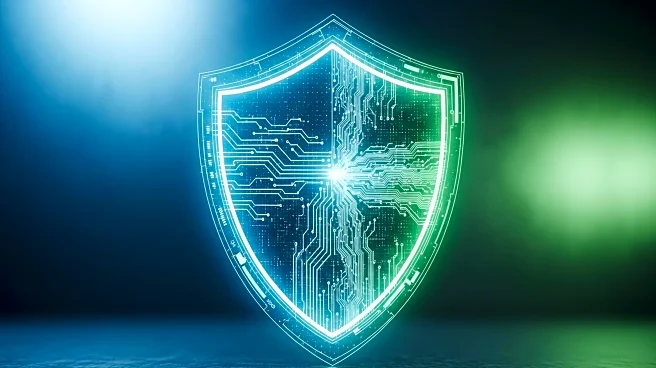What's Happening?
Insider threats have become a significant concern for Chief Information Security Officers (CISOs) as they navigate the complexities of cybersecurity. According to a report by Verizon, the 'human element' was involved in approximately 60% of data breaches over the past year. This includes both negligent and malicious insider activities. The challenge for CISOs is compounded by the evolving nature of social engineering threats, as highlighted by recent attacks on corporate Salesforce instances. These incidents underscore the need for robust insider risk management strategies. The Proofpoint Voice of the CISO report indicates that 60% of CISOs view staff as their greatest cybersecurity risk. Additionally, a 2024 Cybersecurity Insiders report shows a decline in organizations reporting no insider attacks, with a rise in those experiencing multiple attacks. The financial impact of these threats is substantial, with malicious insider attacks incurring higher average data breach costs. The use of AI technology by threat actors further complicates the landscape, enabling large-scale social engineering campaigns.
Why It's Important?
The rise in insider threats poses a significant risk to organizations, with potential financial and reputational damage. Malicious insider activities, driven by financial motives or retribution, can lead to data breaches and extortion. The increasing sophistication of these threats, facilitated by AI and social engineering, requires CISOs to adopt proactive measures. The financial implications are severe, with insider attacks resulting in higher data breach costs. Organizations must invest in dedicated resources and enhance visibility to mitigate these risks. The complexity of insider threats demands a strategic approach, balancing technology with effective risk management practices. As the threat landscape evolves, CISOs must prioritize insider risk management to protect sensitive data and maintain organizational security.
What's Next?
Organizations are expected to enhance their insider risk management strategies by investing in technology and resources. CISOs are advised to leverage existing IT solutions and licensing agreements to improve oversight. The adoption of Zero Trust principles and enhanced visibility of systems can help detect suspicious behavior. Additionally, organizations must establish clear processes for handling insider threats, including triage and investigation procedures. Employee privacy considerations should be integrated into risk management strategies. As technology advances, CISOs must remain vigilant and adapt their strategies to address emerging threats, including the potential rise of malicious AI agents.
Beyond the Headlines
The ethical and legal dimensions of insider threat management are critical. Organizations must balance security measures with employee privacy rights, ensuring that risk management strategies are built with privacy-by-design principles. The cultural shift towards remote work and cloud adoption has increased the complexity of insider threats, necessitating a comprehensive approach that includes governance and controls. As the threat landscape evolves, organizations must foster a culture of security awareness and accountability to effectively mitigate insider risks.











